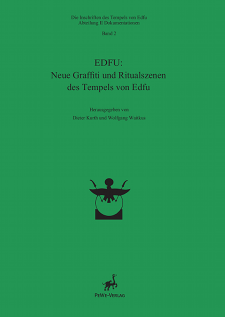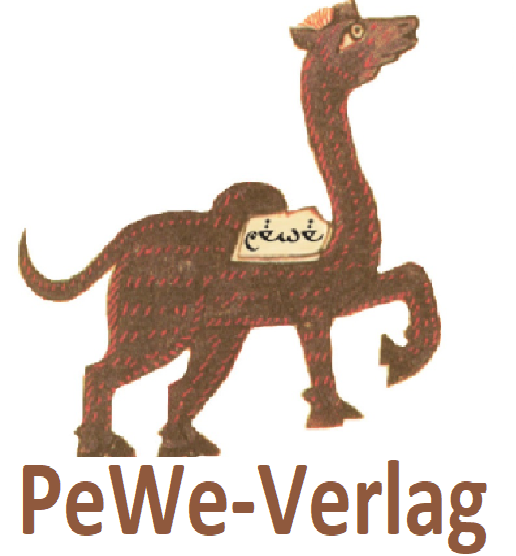
EDFU: Neue Graffiti und Ritualszenen des Tempels von Edfu.
Die Inschriften des Tempels von Edfu — Abteilung II Dokumentationen, Band 2
Format: 29 x 21 cm — Hardcover
Umfang: 87 Seiten, mit 16 Strichzeichnungen und 26 s/w-Fotos, sowie 1 CD-ROM mit 38 Strichzeichnungen und 277 Farbfotos
ISBN: 978-3-935012-06-5
Preis: 29,80 €
© PeWe-Verlag 2010
Der Dokumentationsband enthält sechs Artikel, in denen bisher unpublizierte Graffiti und hieroglyphische Texte veröffentlicht und bearbeitet werden. Den Anfang bilden drei Ritualszenen, die im Eingangskorridor des östlichen Pylonturmes entdeckt wurden und einen Beitrag zur Baugeschichte des Tempels liefern. Es folgen Ritualszenen eines Soubassements, das zur Dekoration des zweiten Hofes des Mammisi gehört. Der anschließende Artikel behandelt demotische Versatzmarken des Tempels von Edfu, die sich vor allem auf der Brücke zwischen den Pylontürmen erhalten haben. Sie eröffnen Einblicke in die bautechnische Planung und Ausführung des Tempelgebäudes. Der nächste Artikel befasst sich mit den bisher nicht beachteten Resten eines kleinen Kultbaues, von dem sich noch sieben dekorierte Blöcke nahe der Nordwestecke des großen Tempels in situ befinden. Es folgen Publikation und Bearbeitung einiger hieratischer, demotischer und koptischer Graffiti. Abschließend werden Graffiti vorgestellt, die aus der Zeit der Ägyptenexpedition Napoleons stammen. Der Inhalt des vorliegenden Bandes zeigt, dass die Erforschung des großen Tempels von Edfu nicht nur im Bereich der Bearbeitung seiner Inschriften, sondern auch im Bereich der Dokumentation längst noch nicht abgeschlossen ist.
Mit einem Beitrag von Andreas Effland
In the six articles making up this documentary volume are edited hitherto unpublished graffiti and hieroglyphic texts. To begin with, there are three ritual scenes that were discovered in the corridor at the entrance to the eastern pylon: they contribute to the building-history of the temple. There follow ritual scenes from a foundation wall, which belong to the decoration of the second court of Mammisi. The next article is concerned with demotic assembly marks of the temple of Edfu, mainly preserved on the bridge connecting the pylons. They allow an insight into the technical planning and the construction of the temple. The following article considers the remains of a small cult building seven decorated blocks of which are preserved in situ close to the northwest corner of the big temple and had not yet been studied in detail. Next are edited several hieratic, demotic and Coptic graffiti, followed by graffiti from the times of Napoleon’s Egyptian expedition. The contents of the volume makes it clear that the exploration of the big temple at Edfu is far from terminated, neither for the evaluation of the inscriptions nor for the documentation.
With one article by Andreas Effland
